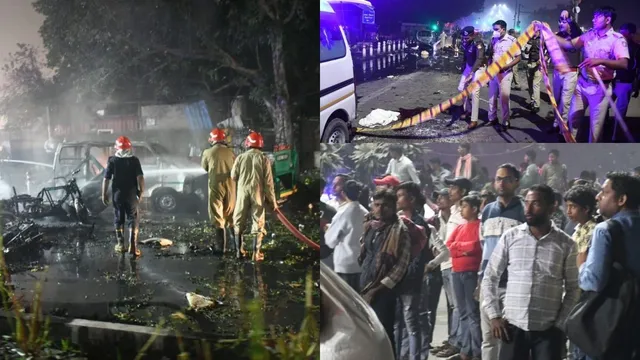- By Priyanka Koul
- Wed, 12 Nov 2025 05:19 PM (IST)
- Source:JND
Delhi Car Blast: The investigation into the shocking Red Fort blast in Delhi has uncovered several startling details. On Monday evening, a high-intensity explosion ripped through a slow-moving vehicle near the Red Fort traffic signal, killing 12 people and injuring several others.
Authorities at LNJP Hospital have warned that the death toll could rise further. The National Investigation Agency (NIA) has now taken over the case as now the Delhi police continue to hunt for additional suspects and trace a red Ford EcoSport believed to be linked to the attack.
Delhi Police has issued an alert for a red Ford EcoSport car, suspected to be linked to the prime suspect, Dr Umar Un Nabi, in the Delhi blast case. The suspected vehicle is registered in the name of one Umar Un Nabi. Delhi Police has also shared the car’s details with the UP and… https://t.co/hCL6rhg4Xe
— ANI (@ANI) November 12, 2025
On Monday evening, a high-intensity blast ripped through an explosive-laden car near Delhi's Red Fort metro station, killing 12 people and injuring several others. Pulwama-based doctor Mohammad Umar Nabi, who was suspected to have been behind the wheels of the Hyundai i20, was an assistant professor at Al-Falah University.
The blast came hours after eight people, including three doctors connected to the university, were arrested and 2,900 kilograms of explosives were seized with the uncovering of a "white-collar terror module" involving the Jaish-e-Mohammed and Ansar Ghazwat-ul-Hind and spanning Kashmir, Haryana and Uttar Pradesh.
Dr Muzammil Ganaie, who was among the arrested, was a teacher at the Al-Falah University.
Delhi Red Fort blast Case: Shocking Details So Far
1. Mobile Data Reveals Spying Missions
Police examining the mobile data of Dr. Muzammil Ganaie, a key figure in the terror module, have found evidence that he conducted multiple trips to the Red Fort area in January. Authorities are piecing together these movements to understand how the attack was planned.
2. Al-Falah University Under Scrutiny
Al-Falah University in Faridabad, Haryana, has come under the scrutiny following the arrest of three doctors linked to the terror module. The sprawling 76-acre campus in Dhauj village, primarily a Muslim-dominated area, is being investigated for allegedly harboring individuals acting on instructions from Pakistan-backed handlers. However, the university’s vice-chancellor, Bhupinder Kaur, has insisted that the institution has no direct connection to the arrests beyond the doctors’ employment in official capacities.
3. i20 Car Was Not on University Grounds
Contrary to circulating social media claims, Faridabad Police clarified that the Hyundai i20 involved in the Red Fort blast was not parked on Al-Falah University’s campus for 10–11 days, where Dr. Muzammil worked. Authorities emphasised that such reports were unverified.
ALSO READ: Delhi Blast: Police Arrested 7 Top Conspirators In 'Faridabad Terror Module'; Who Are They?
4. DNA Testing Connects Suspects
Investigators have identified Umar Nabi, a doctor from Pulwama in Jammu and Kashmir, as the alleged driver of the car used in the explosion. DNA samples were collected from his mother by Jammu and Kashmir Police to confirm familial connections and further strengthen the investigation.
5. Blast Likely Triggered by Panic
The initial findings suggest that the suspect Dr Umar Nabi triggered an explosion in panic, indicating that it was not a suicide attack. As per reports, the crime was committed under severe pressure due to the raids by the security agencies in several key cities.
Apart from this, the suspect also did not follow the usual pattern of the suicide attack as he did not collided the car with any object intentionally. The home ministry on Tuesday handed over the case to the National Investigative Agency (NIA), considering it a possible act of terror.
Raids by security agencies in Delhi-NCR and Pulwama appear to have spooked the suspects, forcing a hurried relocation of explosives. Investigators believe what could have been a planned suicide attack turned into an unintended detonation during transport.
6. Evidence Recovered from Blast Site
Forensic teams have recovered significant evidence from the Red Fort blast site near the Lal Quila Metro Station. Over 40 samples were collected, including two cartridges one live and traces of two different types of explosives. These findings are expected to provide crucial leads in piecing together the full sequence of events leading to the explosion.

